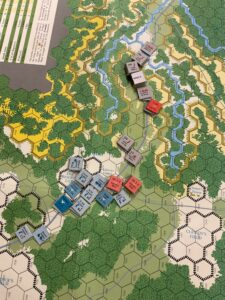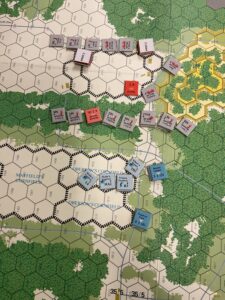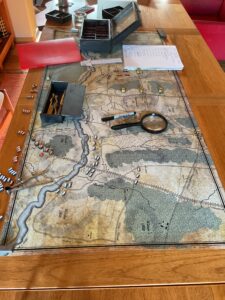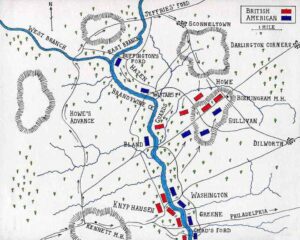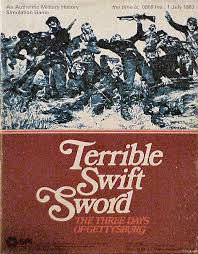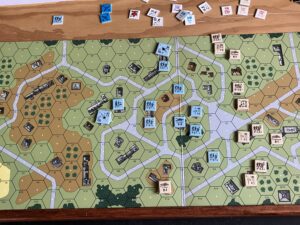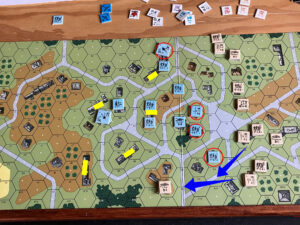You can only read the rules and stare at the setup for so long. At some point, you have to play the game.
Started my Great Battles Of The American Civil War (GBACW) game the other day. Pea Ridge is a classic meeting engagement, with only one unit on the map before Turn 1. Then both sides start moving troops onto the map, with each side’s respective forces entering through two hexes.
During movement I maintained brigade integrity for the most part, attaching artillery to brigades to maximize unit density and minimize the length of the “column of columns” moving on roads through heavy forest. Here’s an overall shot of the game map during Turn 5, when contact first occurred.
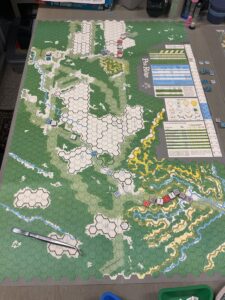
One of the problems I’m having working with the game system is the rules. There are a number of iterations, which is not surprising since the initial game (Terrible Swift Sword – a true Monster Game) was introduced close to fifty years (!) ago. The rules changed as publishers changed; first SPI, then TSR , SDI, and then GMT. These changes were in both additional detail as well as scope. In fact, from what I’ve read, the earlier editions of the game are not playable with the new – GMT – rules. Fortunately, for those just getting into the system, GMT has reissued the main games, and has added others.
Since I had the earlier games, I decided to work with the earlier rules and sold off my GMT GBACW collection. But the question remained, “Which set?”. I’m not the only one with this quandary.
Another rules problem is that many of charts are printed on the individual game maps, not in the game specific rules packets so they can be copied, consolidated and stapled. One possible reason is that the scales of the games vary. The best I can tell is between 150 and 120 yards per hex.
Ugh!
My current approach will be to use the Standard Rules V.1 (with the included charts), individual map charts, Quick Reference Card and Consolidated Errata. The latter two are available over at Russ Gifford’s great SPI site.
Enough of this. I’ll get to the game in the next post.
